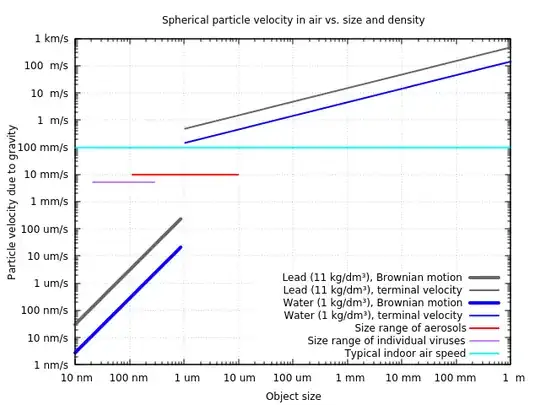If we drop a virus from a height, in static air, will it fall to the ground like a lead ball, a balloon, or like a virus? How will it fall to the bottom? Like a Brownian particle? It will not float in the air, as its density is higher than air. But still it seems a light particle. If I blow the air in which it's immersed, I can blow it away. From all sides air molecules bump into it. Giving it random pushes. Can we say it's part of the air it's in and as such float in it?
If we imagine ourselves standing beside it, while it lays on a solid structure, and we push it over the edge, what effects the molecules have that fly around on all sides? Will I see it fall down between the speeding molecules, which only give random impulses to all sides of the virus?


